Before the Bomb - the art that built Fallout 4 | reviews, news & interviews
Before the Bomb - the art that built Fallout 4
Before the Bomb - the art that built Fallout 4
From World War Z to Cormac McCarthy, the films, books and other media that shaped the hit game
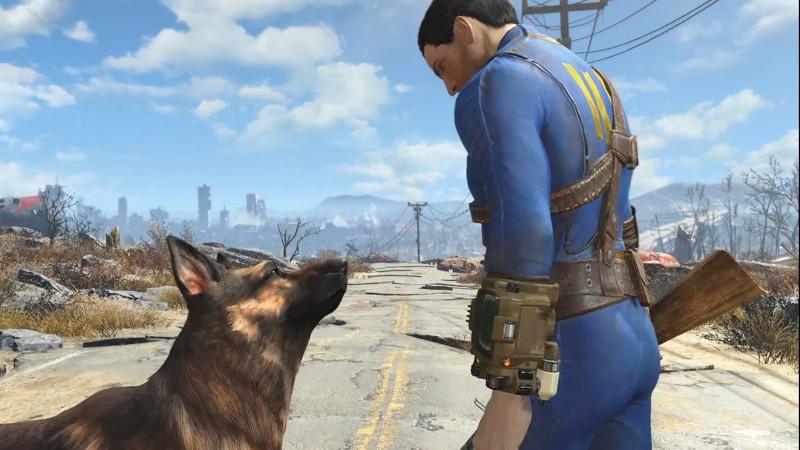
Fallout 4 has proven to be one of the year's biggest games launches. A sprawling role-playing game with a huge open world full of danger and decaying beauty, it casts you in the role of the Sole Survivor of an experimental cryogenic vault that has preserved you for two centuries while the outside world has slowly begun to recover from nuclear war. With just a loyal stray called Dogmeat for company, you must venture forth to find your missing child and face your destiny.
The post-apocalyptic world of Fallout is vividly brought to life by Bethesda Softworks' relatively small team of artists, writers and coders, but the developers would be the first to admit that it didn't spring forth from nothing. From other artists' take on nuclear Armaggeddon to in-jokes and nods at film, TV and even poetry, the Fallout wasteland is the sum of many parts.
What are the books, films and other media that have helped shape the world of Fallout 4? And just what is it about the post-nuclear apocalypse that is so inviting in fiction when it would be a living hell in real life?
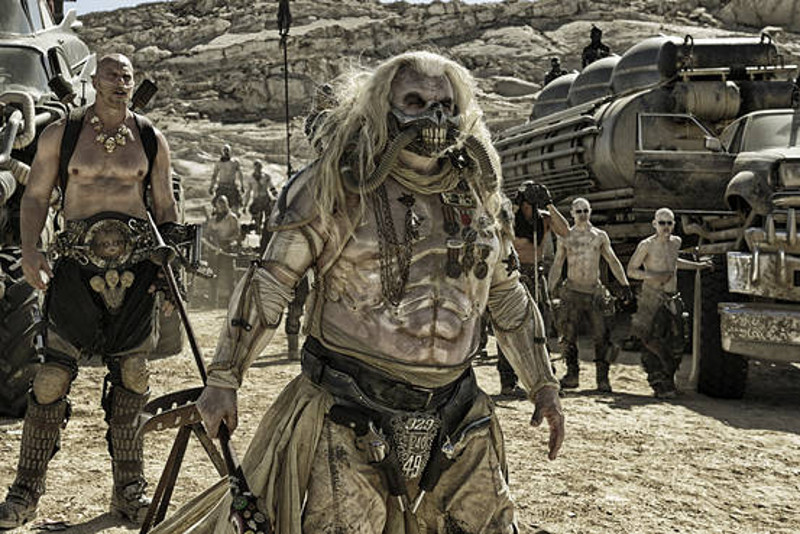 Hell Bent For Leather
Hell Bent For Leather
The most obvious influence on Fallout 4's post-apocalypse is the Mad Max series, the key text of post-apocalypse pulp. George Miller's series started out with a fairly near-future setting but soon settled on an intemporal nuclear desert peopled with tattered survivors, menaced by raiders who seem to have outfitted themselves from a shipping container full of fetish wear and the GWAR tour bus.
The spikes 'n' leather aesthetic is so widespread that it even popped up as a parody in last year's Spongebob Squarepants movie. Sure enough, you can't go far in the Wasteland without meeting raider scum dressed like the Wild Boys video, and you'll soon end up rocking protective armour that looks like it was cobbled together in B&Q.
The roaming bands of slavers and raiders are also influenced by Cormac McCarthy's depressing shopping trolley and cannibalism odyssey, The Road. An even bigger influence in a similar vein is Harlan Ellison's story sequence, A Boy and His Dog. The stories of wasteland scavenger Vic and his talking dog Blood feature such Fallout staples as glowing "ghouls", underground vaults filled with survivors, and of course the central image of the lone wanderer and his faithful hound. Vic even calls Blood 'Dog Meat', albeit as an insult.
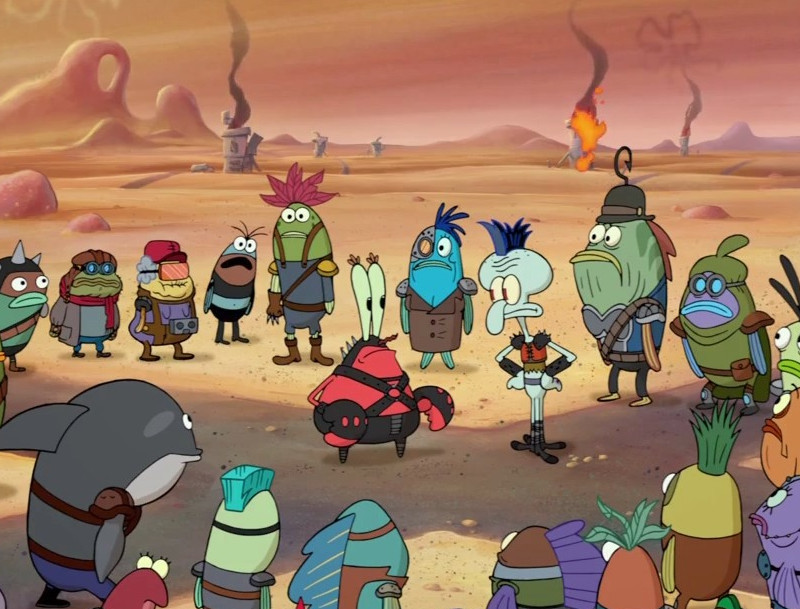 Old Faithful
Old Faithful
When you first emerge from Fallout 4's frozen Vault 111, the first intelligent being you encounter among the chittering radroaches and molerats is your robot butler, Codsworth. One of many Mr Handy robots still running on their portable fusion batteries from before the War, Codsworth has been trying to keep your floors polished and tending what remain of your roses for over 200 years of lonely servitude.
'Mr Handy' was originally a character in Ray Bradbury's short story, There Will Come Soft Rain. In the story, a busy Mr Handy is shown running the household of a middle-class American family, but slowly revealed to be alone in the ruins of the family home, its owners having been vaporised to shadows on the wall by a nuclear flash. Small pockets of civilization trying to survive among the ruins is a recurring theme in the Fallout games, as is the sense of seeing the remains of the cataclysm after they have lain exposed to time and the elements for centuries.
Bradbury's short in turn takes its title from Sarah Teasdale's 1920 poem, There Will Come Soft Rains, a reaction to the First World War which depicts the barren Earth being reclaimed by wild nature after the fall of Man. To further underline the reference, there is an unsettling moment in the earlier game, Fallout 3, in which a Mr Handy recites Teasdale's poem to the player, while 'caring' for its own dead family.
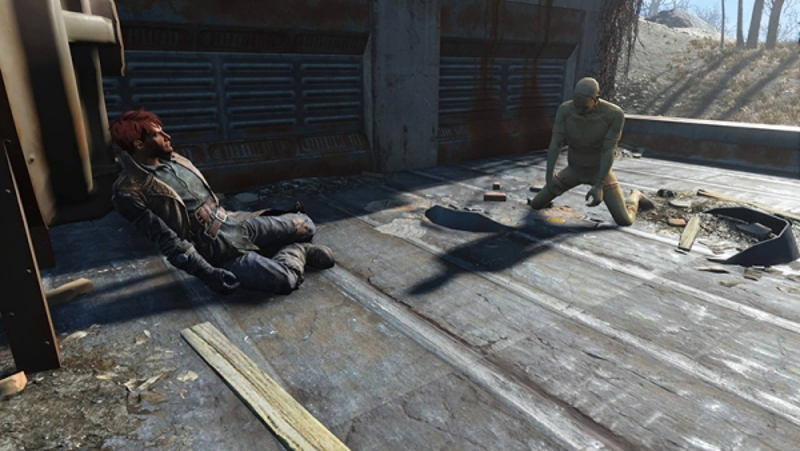 There are countless other small references to science fiction, fantasy and horror films scattered about Fallout 4. Some obscure code numbers found on the starship Nostromo from Ridley Scott's Alien crop up at certain points; there are some aliens straight out of Fifties pulp sci-fi that you can randomly encounter, and there is even a subtle reference to the end of Blade Runner to be found on a rooftop hidden on the map.
There are countless other small references to science fiction, fantasy and horror films scattered about Fallout 4. Some obscure code numbers found on the starship Nostromo from Ridley Scott's Alien crop up at certain points; there are some aliens straight out of Fifties pulp sci-fi that you can randomly encounter, and there is even a subtle reference to the end of Blade Runner to be found on a rooftop hidden on the map.
The Z Word
It wouldn't be popular culture without zombies and the Fallout games have their own, more sophisticated version. Ghouls are heavily mutated humans, warped by exposure to radiation and other mutagens so that they resemble walking corpses. Some are feral and ravenous while other have retained their human wits and suffer from terrible prejudice at the hands of 'normal' humans.
Much of the zombie-like behaviour of Fallout's feral ghouls is lifted wholesale from recent "fast" zombie films like 28 Days Later or World War Z, but the Fallout universe borrows another significant element from the most famous cinematic zombie series: satire.
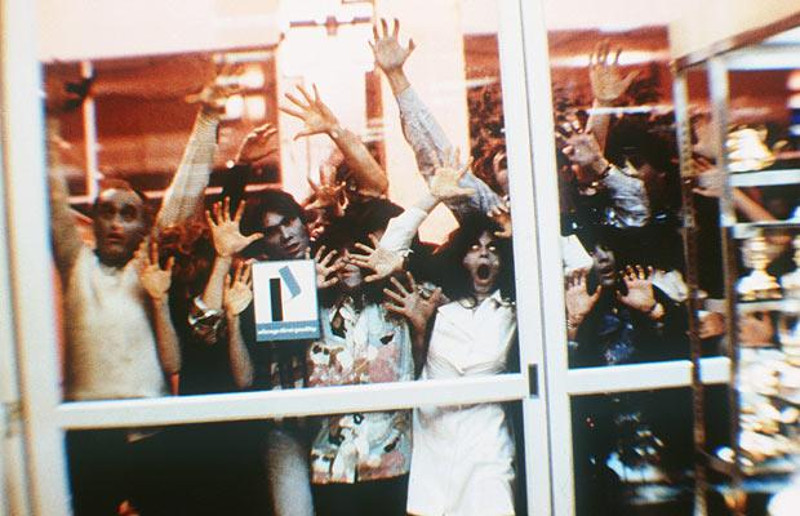 George Romero's Dawn of the Dead slyly satirises consumerism and mall culture by showing its dead legions filling time between horrific attacks by aimlessly wandering through a huge shopping mall, just as they did when alive. Fallout 4's wasteland is scattered with broken consumer goods and prepackaged branded food that is so stuffed full of preservatives that it remains edible (if somewhat irradiated) after 200 years on the shelf. Invented brand names are everywhere and the denizens of the wasteland are often confused about the significance of certain pre-war pursuits, such as the character who believes baseball to be a form of lethal gladiatorial combat.
George Romero's Dawn of the Dead slyly satirises consumerism and mall culture by showing its dead legions filling time between horrific attacks by aimlessly wandering through a huge shopping mall, just as they did when alive. Fallout 4's wasteland is scattered with broken consumer goods and prepackaged branded food that is so stuffed full of preservatives that it remains edible (if somewhat irradiated) after 200 years on the shelf. Invented brand names are everywhere and the denizens of the wasteland are often confused about the significance of certain pre-war pursuits, such as the character who believes baseball to be a form of lethal gladiatorial combat.
The alternate history of the Fallout world was stuck in a sort of perma-1950s retro future before the bombs fell, and the more sci-fi elements of the game, such as ray guns, robots and other mad science, draw on the optimistic, pro-nuke futurism of The Jetsons or Forbidden Planet. The world before the Bomb (depicted in detail in Fallout 4, for the first time in a Fallout game) is a pastiche of picket fences, smiling neighbours and capitalist abundance that feels like Pleasantville meets Flash Gordon.
Getting Cosy
With the possible exception of The Road (and even that is debateable), all of the post-apocalyptic fictions that have been borrowed by the Fallout games are examples of what the science fiction author and critic, Brian W Aldiss, called the "Cosy Catastrophe". Aldiss was critiquing John Wyndham's novel The Day of the Triffids in his history of science fiction, Billion Year Spree, but the point applies to almost every instance of post-apocalyptic fiction.
Put simply, if a game, a book or a film were to accurately portray life after a nuclear, biological or similar catastrophe then the narrative would not involve heroic battles for survival against super-mutants or noble quests to restore civilization. Rather, it would be a very short and sad story about people dying from cancer while watching their children grow up with horrible birth defects. There would probably be a sub-plot about potato blight.
Fallout 4, like almost all post-apocalyptic fiction, tips the scales in the favour of the survivors. The ruined buildings are littered with health-giving food and semi-magical 'stimpacks' that can cure any wound. There are feral ghouls and mutant animals, but people are still basically healthy and able to birth healthy offspring.
What Fallout offers, just like its peers, is a fantasy of unconstrained freedom. Who cares if there's a slight risk of radiation sickness? It's easily cleared up with a shot of RadAway and anyway, it's a small price to pay for an open world where you can act with impunity. It is the libertarian fantasy made flesh – a world with no laws except those you make yourself. And you get to keep all the cool stuff that the dead guys left behind. It's win-win.
Fallout 4 offers all that and (a bit) more. If you are tempted to wander the desolate wastes of the Commonwealth, keep your eyes peeled. You might just spot a mutant in-joke or a feral literary reference.
Explore topics
Share this article
The future of Arts Journalism
You can stop theartsdesk.com closing!
We urgently need financing to survive. Our fundraising drive has thus far raised £49,000 but we need to reach £100,000 or we will be forced to close. Please contribute here: https://gofund.me/c3f6033d
And if you can forward this information to anyone who might assist, we’d be grateful.

Subscribe to theartsdesk.com
Thank you for continuing to read our work on theartsdesk.com. For unlimited access to every article in its entirety, including our archive of more than 15,000 pieces, we're asking for £5 per month or £40 per year. We feel it's a very good deal, and hope you do too.
To take a subscription now simply click here.
And if you're looking for that extra gift for a friend or family member, why not treat them to a theartsdesk.com gift subscription?
more Gaming
 'We are bowled over!' Thank you for your messages of love and support
Much-appreciated words of commendation from readers and the cultural community
'We are bowled over!' Thank you for your messages of love and support
Much-appreciated words of commendation from readers and the cultural community
 Kelly Clancy: Playing with Reality - How Games Shape Our World review - how far games go back
The acclaimed neuroscientist on the world and history of games, in all their variety
Kelly Clancy: Playing with Reality - How Games Shape Our World review - how far games go back
The acclaimed neuroscientist on the world and history of games, in all their variety
 Rage 2 review – garish but great post-apocalyptic shooter
Challenge The Authority in this 'Mad Max on mushrooms' renegade romp
Rage 2 review – garish but great post-apocalyptic shooter
Challenge The Authority in this 'Mad Max on mushrooms' renegade romp
 World War Z review - bloodthirsty fun with the zombie apocalypse
Chainsawing the brain-eaters as you battle against the tide of the undead
World War Z review - bloodthirsty fun with the zombie apocalypse
Chainsawing the brain-eaters as you battle against the tide of the undead
 The Lego Movie 2 Videogame review - everything is not awesome
Few fresh ideas means this movie adaptation treads the same old ground
The Lego Movie 2 Videogame review - everything is not awesome
Few fresh ideas means this movie adaptation treads the same old ground
 Anthem review - singing praises? More like a cautious nod
A rocky start for a new franchise that offers potential and problems in equal measure
Anthem review - singing praises? More like a cautious nod
A rocky start for a new franchise that offers potential and problems in equal measure
 Crackdown 3 review - spectacular super-powered action that was great fun many years ago
Nearly a decade has passed since the last incarnation but little has changed in this stagnant shooter
Crackdown 3 review - spectacular super-powered action that was great fun many years ago
Nearly a decade has passed since the last incarnation but little has changed in this stagnant shooter
 Battlefield V review - WWII on an epic scale
The veteran series returns for another ambitious tour of duty
Battlefield V review - WWII on an epic scale
The veteran series returns for another ambitious tour of duty
 Fallout 76 review - how to wreck a perfectly good legacy with one messy game
When home runs go horribly wrong
Fallout 76 review - how to wreck a perfectly good legacy with one messy game
When home runs go horribly wrong
 Red Dead Redemption 2 review - the cowboy drama makes a triumphant return
An ambitious Wild West odyssey that matches epic scale with benchmark skill
Red Dead Redemption 2 review - the cowboy drama makes a triumphant return
An ambitious Wild West odyssey that matches epic scale with benchmark skill
 Call of Duty: Black Ops 4 review – less is more
Solo rations have been relegated from this benchmark war series
Call of Duty: Black Ops 4 review – less is more
Solo rations have been relegated from this benchmark war series
 FIFA 19 review - the best just got a bit better
It looks and plays great, but what’s new?
FIFA 19 review - the best just got a bit better
It looks and plays great, but what’s new?

Add comment